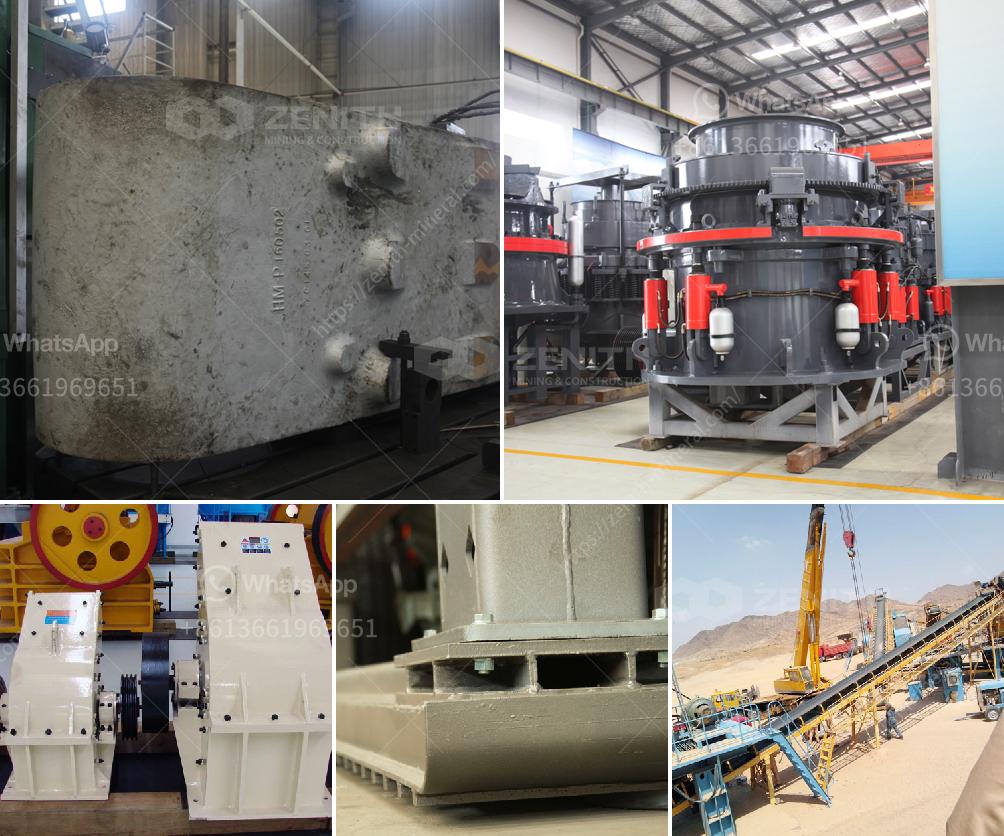A rock crusher is a machine designed to reduce large rocks into smaller rocks, gravel, or rock dust. They are used in various industries, including mining, construction, and recycling, to break down rocks into more manageable sizes.
Types of Rock Crushers
-
Jaw Crusher:
- How it Works: It uses compressive force for breaking down material. As the name suggests, a jaw crusher has two jaws — one stationary and one that moves back and forth. The material is fed into the top of the crusher and is compressed between the jaws. As the moving jaw comes down, it moves closer to the stationary jaw, crushing the material. The crushed material then exits the crusher from the bottom.
- Use Cases: Suitable for primary crushing of large, hard materials.
-
Gyratory Crusher:
- How it Works: Similar to a jaw crusher, it also uses compressive force. The crusher consists of a concave surface and a conical head. The primary difference is that the movement is more circular, allowing it to handle slightly larger materials than a jaw crusher.
- Use Cases: Ideal for primary crushing in large mining operations.
-
Cone Crusher:
- How it Works: It follows a similar principle as a gyratory crusher, but the material is crushed in a conical or cup-shaped surface. The cone crusher breaks the rocks by squeezing them between a gyrating spindle and an enclosing concave surface.
- Use Cases: Often used for secondary or tertiary crushing.
-
Impact Crusher:
- How it Works: These crushers use impact rather than pressure to crush material. The rock is typically fed into a chamber from the top, where it encounters a spinning rotor. The rotor's movement throws the rock against hard surfaces within the chamber, causing it to shatter.
- Use Cases: Suitable for softer, less abrasive materials.
-
Hammer Crusher:
- How it Works: Similar to impact crushers, hammer crushers use high-speed rotating hammers to impact the material. The material is crushed by impacting, grinding, and abrading against the hammers and the breaker plates within the machine.
- Use Cases: Typically used for medium hardness and brittle materials.
-
Roll Crusher:
- How it Works: These utilize the friction of two spinning rolls to crush the material. The material is fed into the gap between the rolls, and as they rotate, it gets compressed and crushed.
- Use Cases: Suitable for producing finer particles from soft to medium-hard materials.
Application and Importance
- Mining and Mineral Processing: Crushers are essential in mining operations to reduce the size of ore and rocks, creating smaller, manageable pieces for further processing.
- Construction Industry: They create aggregates used in concrete, road construction, and other building projects.
- Recycling: Many rock crushers are used in recycling materials like concrete and asphalt to reuse these materials in new projects.
Safety and Efficiency
- Rock crushers require careful and trained operation to ensure safety and to maximize efficiency.
- Regular maintenance and inspection are crucial to prevent breakdowns and ensure the longevity of the equipment.
By understanding how different rock crushers work and their specific applications, industries can select the appropriate machine for their needs, thus optimizing productivity and reducing operational costs.

